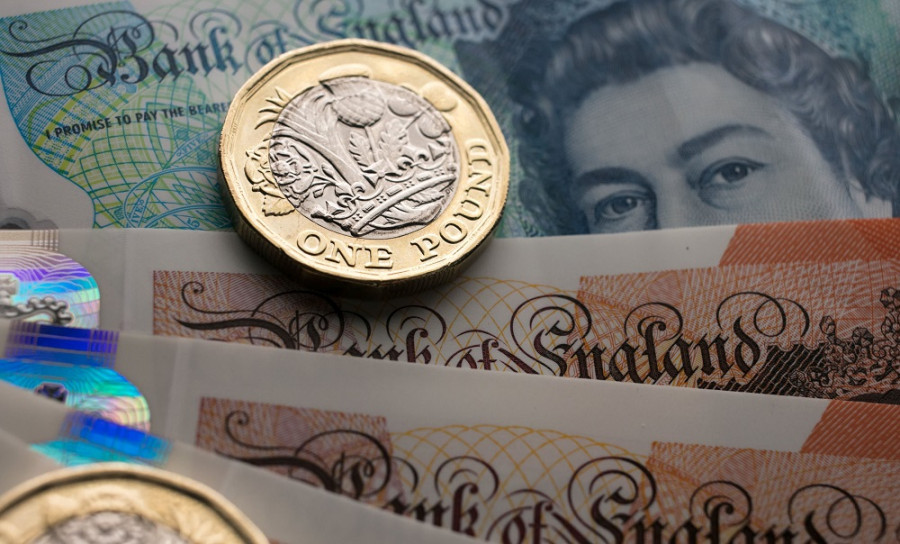Pound on top on Thursday: GBP/USD buyers stormed the 1.27 figure, reacting to the outcomes of the Bank of England's final meeting in 2023. Traders tried to settle in this price range recently, at the end of November. However, the US Non-Farms stopped the bullish momentum, and the pair was forced to retreat to the base of the 1.25 figure.
Now the situation has changed again, thanks to that the price is once again demonstrating a fairly strong upward movement. It is noteworthy that in this case, the price increased not only because the dollar weakened but also due to the pound's strength. The pound positively reacted to the results of the BoE's December meeting, although the central bank kept all parameters of monetary policy unchanged. The favorable fundamental background has allowed GBP/USD buyers to return to the unfinished gestalt to complete what was started. If traders consolidate above the resistance level of 1.2720, the next resistance level will be the target of 1.2850 (the upper Bollinger Bands line on the weekly chart). Such a scenario is quite likely, given the events of the past few days.
Lowered market expectations
Just recently, in the fall, the Federal Reserve demonstrated a fighting mood, stating that the question of an additional interest rate hike is still on the agenda. At the same time, the BoE voiced rather cautious theses amid slowing inflation growth. At the moment, the situation has changed radically: the Fed has put an end to the current cycle of tightening monetary policy and has begun to discuss the prospects for a rate cut in 2024. Meanwhile, the British central bank, contrary to dovish forecasts, maintained a fighting mood and even allowed for another interest rate hike in the foreseeable future.
Such an unexpected decoupling made it possible for the bulls to be assertive again, this time finding themselves in a more advantageous position due to the pound's strength.

By and large, the BoE did not say anything particularly special or sensational. No. It's all about the market's low expectations. The recent inflation report played a role in this, reflecting a decline in the Consumer Prices Index to 4.6% (the slowest growth rate since October 2021) and the core CPI to 5.7% (the slowest growth rate since March 2022). Following the inflation report, weak UK GDP data was published. This report also came out in the "red zone." It turned out that the GDP contracted by 0.3% in October on a monthly basis (with a forecast of a 0.1% decline) and remained at zero on an annual basis (with a forecast of 0.1% growth).
Such fundamental conditions did not contribute to the strengthening of hawkish sentiment – on the contrary, the market began to speculate about the prospects of a rate cut by the British central bank. For example, Goldman Sachs published a forecast according to which the first round of rate cuts by 25 basis points will take place in the third quarter of next year, namely at the August meeting. Also, ahead of the December meeting, a survey conducted by Reuters was published: 45% of the surveyed economists predicted the first round of monetary policy easing in the third quarter. At the same time, about 30% of respondents stated that the first rate cut would occur earlier – already in the second quarter of 2024.
In other words, given such a "preview," traders were ready to hear hints of a dovish nature or at least assurances that the current cycle of policy tightening is complete, and the rate will remain at the achieved level "as long as necessary" to achieve the inflation target.
Bank of England - pound's ally
Contrary to dovish forecasts, the BoE maintained a hawkish stance, stating that the central bank may need further tightening of monetary policy if there is evidence of more sustained inflationary pressure.
Certainly, there's a low chance of another rate hike. But the key point here is different: the fact that the central bank voiced readiness for further monetary tightening has diminished hopes for rate cuts in the early next year. This circumstance provided additional support for the British currency.
Moreover, another fundamental factor played in favor of the pound: three members of the Committee voted for a rate hike (instead of two, as analysts predicted). Catherine Mann, Megan Greene, and Jonathan Haskel supported raising the benchmark rate by 25 basis points.
By the way, the tone of the accompanying statement was also quite "aggressive." The central bank emphasized that it is too early to draw conclusions about a sustainable decline in inflation in the services sector or a slowdown in wage growth. At the same time, the BoE believes that inflation resilience indicators in the UK are "higher than in other large developed economies."
Thus, the current GBP/USD growth is quite justified: the BoE unexpectedly supported the pound, while the Federal Reserve knocked out the greenback. You can consider long positions on the pair after buyers consolidate above the resistance level of 1.2720 – in this case, the next targets will be the levels of 1.2800 and 1.2850 (upper line of the Bollinger Bands on the 1W timeframe).
The material has been provided by InstaForex Company - www.instaforex.comfrom Forex analysis review https://ift.tt/fm4G2RM
via IFTTT
